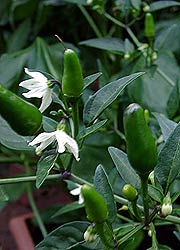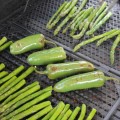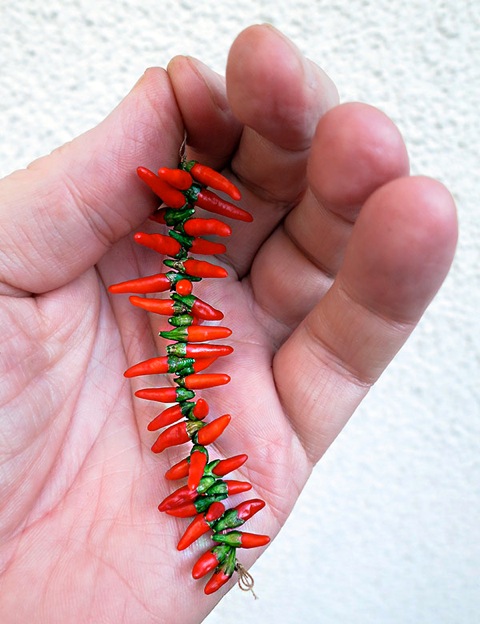Since many wild chiles have the word “bird” in their names, distinguishing among them can be difficult. Most bird peppers are undomesticated varieties of four species: annuum, baccatum, chinense, and frutescens. The most familiar bird peppers are the Mexican chiltepin and the Texan chilipiquin. The African birdseye chile is both wild and domesticated and is also known in English as African devil chile, in Swahili as pili-pili and in Kamba as ndul. Some sources state that this chile is also prik kee nu, the Thai “mouse dropping pepper,” but that is a different, much thinner chile. It should be pointed out that pili-pili simply means “pepper-pepper” and is a generic term for any African chile.

Photo by Harald Zoschke
It has grown wild in Africa for centuries but has been under commercial cultivation in for many years in Uganda, Malawi, and Zimbabwe. Other countries where it is cultivated include Papua New Guinea, China, Mexico, Chile, and India. The plants are perennial and sometimes produce for three years before they are plowed under. Growing African birdseye chiles is very labor-intensive and they require hand-picking. The pods are picked when they are bright red and 2 or less centimeters (3/4 inch) long. A single plant yields about 300 grams (2/3 pound) of fresh pods. Yields of about 1.8 metric tons per hectare are typical (a hectare is 2.47 acres).
Take care in using African birdseye chiles in the kitchen because of the extreme pungency of the pods. You would not, for example, want to make a hot sauce out of a cup of the pods and some vinegar. For more information, click here.
Latest posts by Mark Masker (see all)
- 2024 Scovie Awards Call for Entries - 07/07/2023
- 2024 Scovie Awards Early Bird Special: 3 Days Left - 06/29/2023
- 2024 Scovie Awards Early Bird Deadline Looms - 06/25/2023









